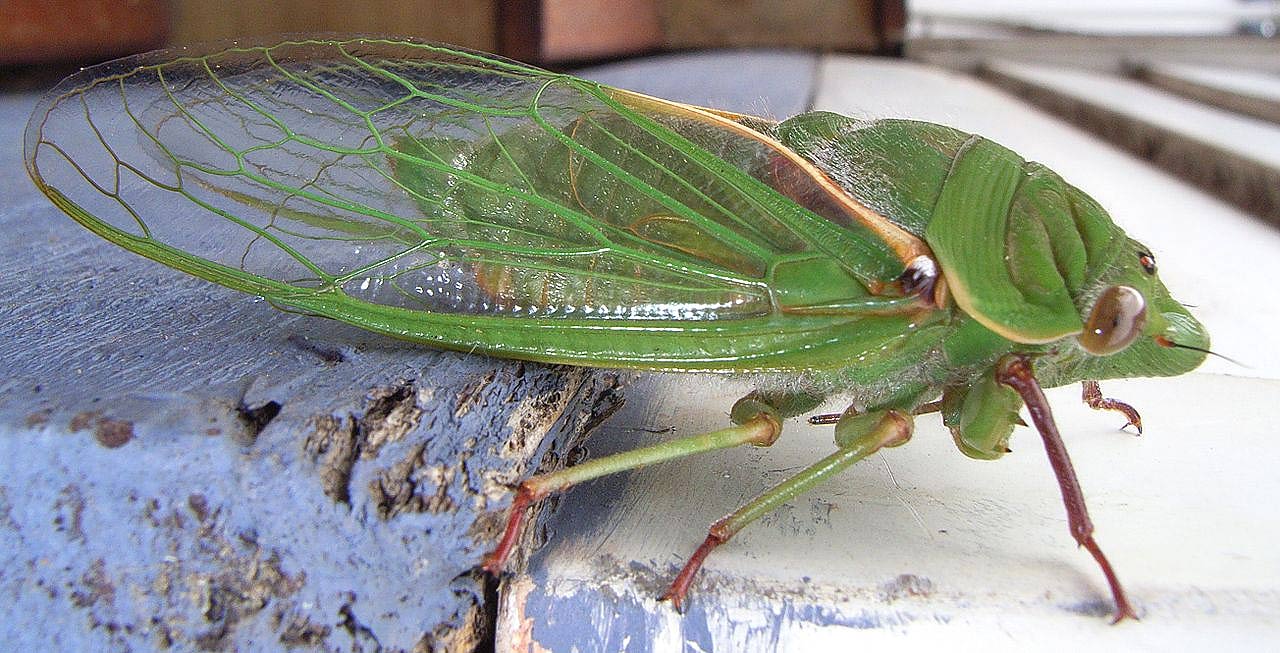Cicadas
Cicadas are a superfamily, the Cicadoidea
Cicadas
What’s That Noise ! Cicadas are insects. There are more than 200 kinds of Australian cicadas. Adult cicadas live on trees, but before that they live under the ground. Adults have thick bodies covered with a hard skin. The mouth parts of the cicada that are used to pierce the surface of plants to suck out the juices are called stylets.
Cicadas feed by piercing the surface of plants with their mouth stylets. They then suck up the sap through a tube formed by the concave surfaces of two of the stylets. This piercing and sucking kind of feeding apparatus can be contrasted with the biting and chewing kind found in grasshoppers, cockroaches, beetles and caterpillars.
Cicadas have two pairs of glassy, veined wings. The wing span of the smallest species is about 2.5 centimetres. The largest species can have a wing span of up to 15 centimetres. Many people mistake them for large house flies! Cicadas are harmless to people – but they can certainly be very noisy.
Cicadas are raucous and ear-splitting singers! The song is a mating call produced by the males only. Each species has its own distinctive call and only attracts females of its own kind even though rather similar species may co-exist.
Interesting Facts
There are more than 200 species in Oz.
Cicadas are harmless to people.
Cicadas suck juice from plants.
Cicadas have large compound eyes as well as three very small simple eyes on the top of the head.
Cicadas are the only insects to have developed such an effective and specialised means of producing sound. Some large species such as the Greengrocer/Yellow Monday and the Double Drummer produce a noise intensity in excess of 120 dB at close range (this is approaching the pain threshold of the human ear). In contrast, some small species have songs so high in pitch that the noise is beyond the range of our hearing.
Adult cicadas have three pairs of legs. Cicadas have large compound eyes as well as three very small simple eyes on the top of the head.
Black Prince, the Green Grocer and the Double Drummer are the common names for three of the major species of Australian cicada.
After mating, the female makes a slit in the branch of a tree and lays her eggs in it. She does both of these things with a strong, sharp egg laying spike called the ovipositor. In about 6 weeks, the eggs hatch and tiny nymphs drop to the ground and burrow into the soil. The nymphs feed by sucking the sap from the roots of the tree with their feeding tubes. Cicada nymphs can live for up to seven years underground, moulting (shedding their skin)as they grow because their skin does not stretch.
Cicada Nymphs
When the nymphs are fully grown, they burrow out of the soil and climb up a tree. They moult for the last time, and emerge as adult cicadas with wings. Adult males attract a female to mate by making a singing noise using a part of the body called the tymbal. Adult cicadas live for only a few weeks. Birds eat cicadas and wasps lay their eggs in them.

